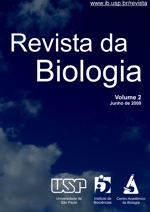As Características da cobertura vegetal do distrito de Pinheiros em São Paulo no início do século XXI
DOI:
https://doi.org/10.11606/issn.1984-5154.v2p18-21Palavras-chave:
cobertura vegetal, conectividade, ambiente urbanoResumo
A cobertura vegetal é um elemento importante no ambiente urbano, pois agrega melhorias ambientais e qualidade de vida aos cidadãos. No distrito de Pinheiros em São Paulo, o mapeamento de imagens de satélite em escala de detalhe da cobertura vegetal, evidencia distribuição heterogênea da vegetação, mais concentrada em manchas ao norte e sul do distrito, correspondendo a 15% da área. A região central apresenta grande escassez de cobertura vegetal e deveria ser considerada como alvo prioritário de planejamento de melhorias ambientais. O arranjo da vegetação onde está presente é agrupado, porém não-contínuo e também poderia ser melhorado com adensamento vegetacional.
Downloads
Referências
Furlan, S. A. “Paisagens sustentáveis: São Paulo e sua cobertura vegetal” In: CARLOS, A. F. A. & OLIVEIRA, A. “Geografias de São Paulo: a metrópole do século XXI”. São Paulo: Contexto, 2004.
Jim, C. Y. “Tree-canopy characteristics and urban development in Hong Kong” The Geographical Review V. 79 No. 2 (p. 210) American Geographical Society: Lawrence, 1989.
Lopez, M. “34 Ibirapueras perdidos em uma década”. Folha de São Paulo, set/2003.
Nucci, J. C. & Cavalheiro, F. “Cobertura vegetal em áreas urbanas – Conceito e Método” Revista GEOUSP – Tempo e espaço, No. 6 (p. 29). São Paulo: Departamento de Geografia, 1998.
Rocha, Y. T. “Parques Urbanos: um recorte de São Paulo e suas potencialidades para o turismo” Revista GEOUSP – Tempo e Espaço, No. 9 (p. 79). São Paulo: Departamento de Geografia, 2000.
Downloads
Publicado
Edição
Seção
Licença
Copyright (c) 2009 Julia Camara de Assis

Este trabalho está licenciado sob uma licença Creative Commons Attribution 4.0 International License.
Salientamos que nossa revista não detém copyright, estes são exclusivos do autor do texto. Pretendemos com isso não criar entraves ao acesso do material publicado e atingir com mais intensidade nosso objetivo de divulgação da ciência.








 revistadabiologia@ib.usp.br
revistadabiologia@ib.usp.br 2008 - 2024 Revista da Biologia
2008 - 2024 Revista da Biologia